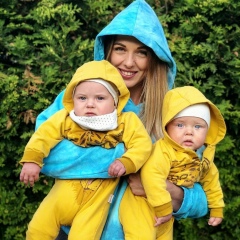7 заблуждений о Санкт-Петербурге:
В Петербурге все может быть. Сами жители о своем городе многого не знают, а многое, что знают, частенько оказывается заблуждением. Вот только некоторые из самых популярных петербургских мифов. Возможно, и вы тоже верите в то, что…
1. Санкт-Петербург назван в честь Петра I.
Многие ошибочно полагают, что Санкт-Петербург назван в честь своего основателя – Петра I. Однако это не так. Город носит имя небесного покровителя первого русского императора – апостола Петра. Желание назвать какую-нибудь крепость в честь своего небесного покровителя было у российского императора задолго до основания Петербурга. Такую крепость должны были воздвигнуть на Дону в случае успеха Азовского похода, но он закончился неудачей. Крепость в честь святого Петра была заложена 16 мая 1703 года на Неве и названа Санкт-Петербург. Но уже 29 июня после закладки в крепости собора Петра и Павла она стала именоваться Петропавловской, а старое первоначальное имя Петербург распространилось позднее на весь город.
2. Миф об основании Санкт-Петербурга.
"16 мая 1703 года во время осмотра острова Ени-саари Петр, вдруг остановившись, вырезал два пласта дерна, положил их крестообразно и сказал: "Здесь быть городу". В это время в воздухе появился орел и стал парить над царем".
На самом деле на Заячьем острове (по-фински Ени-саари) был заложен не город, а крепость. Город возник позже под ее защитой на соседнем Березовом острове. Некоторые исследователи утверждают, что Петр при закладке не присутствовал (как установили историки, с 11 по 20 мая его на месте будущего города вообще не было).
3. Санкт-Петербург был основан на необжитой пустынной территории.
Эта легенда укоренилась в сознании питерцев, чему немало способствовали строки из пушкинского "Медного всадника": "На берегу пустынных волн". Мы представляем себе необжитую пустынную местность, покрытую лесом и болотами. На самом деле, только на месте исторического центра города существовало около сорока поселений, причем многие из них еще до шведской оккупации принадлежали Новгороду. Многие строения будущей столицы возникали уже на обжитых местах. На Васильевском острове стоял охотничий домик Делагарди, на месте Адмиралтейства — шведское поселение, название которого установить не удалось; в устье Фонтанки — деревня Каллила (вот откуда Калинкина деревня и Калинкин мост); на месте Инженерного замка — мыза Канау с ухоженным обширным садом (на его месте и возник Летний сад); в районе Смольного — село Спасское. До возникновения города существовали поселения, названия которых сохранились до сих пор — Сабирино, Одинцово, Кукарево, Максимово, Волково и Купчино.
4. Медный всадник сделан из меди.
"Медный всадник" — символ города. "Медный всадник — все мы находимся в вибрации его меди", — писал А. А. Блок. Однако, материал памятника не медь, а бронза, а свое название он получил только после появления одноименной поэмы А. С. Пушкина.
5. Поцелуев мост получил свое название благодаря влюбленным.
До сих пор Поцелуев мост считается местом свиданий влюбленных. Так повелось, якобы, с давних пор. Отсюда и название, тем более символично, что этот мост не разводится. На самом деле мост назван по фамилии купца Поцелуева, содержавшего трактир на левом берегу реки Мойки, на углу теперешней улицы Глинки. Трактир назывался «Поцелуй», поэтому и ведущий к нему мост стали называть Поцелуев.
6. Миф о происхождении названия "Васильевский остров".
О происхождении названия "Васильевский остров" тоже есть легенда-заблуждение. Считается, что при Петре на западной оконечности острова находилось укрепление, которым командовал капитан-артиллерист Василий Корчмин. Посылая к нему приказы, Петр писал: "К Василию на остров" — отсюда, якобы, и название. Но название острова существовало до основания Петербурга. Оно упоминается еще в 1500 году в переписной окладной книге Водской (Водинской) пятины Великого Новгорода. В то же время остров имели другое финское название — Лосиный (Хирва-саари). Именно здесь Петр и предполагал создать центр города.
7. Улица Бармалеева названа в честь разбойника Бармалея из Сказки Чуковского.
На самом деле все было с "точностью до наоборот". К. И. Чуковский бродил по городу в начале 20-х годов с художником М. И. Добужинским, и они натолкнулись на улицу со столь странным названием. Конечно, оба начали фантазировать — так родился африканский разбойник Бармалей. Добужинский тут же нарисовал его портрет, а Чуковский позже придумал стихи. В русском языке есть слово "бармолить" — говорить невнятно. Может быть, слово "бармалей" было прозвищем человека, потом стало его фамилией? Отсюда и название улицы, где он, скорее всего, был землевладельцем.
В Петербурге все может быть. Сами жители о своем городе многого не знают, а многое, что знают, частенько оказывается заблуждением. Вот только некоторые из самых популярных петербургских мифов. Возможно, и вы тоже верите в то, что…
1. Санкт-Петербург назван в честь Петра I.
Многие ошибочно полагают, что Санкт-Петербург назван в честь своего основателя – Петра I. Однако это не так. Город носит имя небесного покровителя первого русского императора – апостола Петра. Желание назвать какую-нибудь крепость в честь своего небесного покровителя было у российского императора задолго до основания Петербурга. Такую крепость должны были воздвигнуть на Дону в случае успеха Азовского похода, но он закончился неудачей. Крепость в честь святого Петра была заложена 16 мая 1703 года на Неве и названа Санкт-Петербург. Но уже 29 июня после закладки в крепости собора Петра и Павла она стала именоваться Петропавловской, а старое первоначальное имя Петербург распространилось позднее на весь город.
2. Миф об основании Санкт-Петербурга.
"16 мая 1703 года во время осмотра острова Ени-саари Петр, вдруг остановившись, вырезал два пласта дерна, положил их крестообразно и сказал: "Здесь быть городу". В это время в воздухе появился орел и стал парить над царем".
На самом деле на Заячьем острове (по-фински Ени-саари) был заложен не город, а крепость. Город возник позже под ее защитой на соседнем Березовом острове. Некоторые исследователи утверждают, что Петр при закладке не присутствовал (как установили историки, с 11 по 20 мая его на месте будущего города вообще не было).
3. Санкт-Петербург был основан на необжитой пустынной территории.
Эта легенда укоренилась в сознании питерцев, чему немало способствовали строки из пушкинского "Медного всадника": "На берегу пустынных волн". Мы представляем себе необжитую пустынную местность, покрытую лесом и болотами. На самом деле, только на месте исторического центра города существовало около сорока поселений, причем многие из них еще до шведской оккупации принадлежали Новгороду. Многие строения будущей столицы возникали уже на обжитых местах. На Васильевском острове стоял охотничий домик Делагарди, на месте Адмиралтейства — шведское поселение, название которого установить не удалось; в устье Фонтанки — деревня Каллила (вот откуда Калинкина деревня и Калинкин мост); на месте Инженерного замка — мыза Канау с ухоженным обширным садом (на его месте и возник Летний сад); в районе Смольного — село Спасское. До возникновения города существовали поселения, названия которых сохранились до сих пор — Сабирино, Одинцово, Кукарево, Максимово, Волково и Купчино.
4. Медный всадник сделан из меди.
"Медный всадник" — символ города. "Медный всадник — все мы находимся в вибрации его меди", — писал А. А. Блок. Однако, материал памятника не медь, а бронза, а свое название он получил только после появления одноименной поэмы А. С. Пушкина.
5. Поцелуев мост получил свое название благодаря влюбленным.
До сих пор Поцелуев мост считается местом свиданий влюбленных. Так повелось, якобы, с давних пор. Отсюда и название, тем более символично, что этот мост не разводится. На самом деле мост назван по фамилии купца Поцелуева, содержавшего трактир на левом берегу реки Мойки, на углу теперешней улицы Глинки. Трактир назывался «Поцелуй», поэтому и ведущий к нему мост стали называть Поцелуев.
6. Миф о происхождении названия "Васильевский остров".
О происхождении названия "Васильевский остров" тоже есть легенда-заблуждение. Считается, что при Петре на западной оконечности острова находилось укрепление, которым командовал капитан-артиллерист Василий Корчмин. Посылая к нему приказы, Петр писал: "К Василию на остров" — отсюда, якобы, и название. Но название острова существовало до основания Петербурга. Оно упоминается еще в 1500 году в переписной окладной книге Водской (Водинской) пятины Великого Новгорода. В то же время остров имели другое финское название — Лосиный (Хирва-саари). Именно здесь Петр и предполагал создать центр города.
7. Улица Бармалеева названа в честь разбойника Бармалея из Сказки Чуковского.
На самом деле все было с "точностью до наоборот". К. И. Чуковский бродил по городу в начале 20-х годов с художником М. И. Добужинским, и они натолкнулись на улицу со столь странным названием. Конечно, оба начали фантазировать — так родился африканский разбойник Бармалей. Добужинский тут же нарисовал его портрет, а Чуковский позже придумал стихи. В русском языке есть слово "бармолить" — говорить невнятно. Может быть, слово "бармалей" было прозвищем человека, потом стало его фамилией? Отсюда и название улицы, где он, скорее всего, был землевладельцем.
7 misconceptions about St. Petersburg:
In St. Petersburg everything can be. The residents themselves do not know a lot about their city, and much that they know is often a delusion. Here are just a few of the most popular St. Petersburg myths. Perhaps you, too, believe that ...
1. St. Petersburg is named after Peter I.
Many people mistakenly believe that St. Petersburg is named after its founder, Peter I. However, this is not the case. The city bears the name of the heavenly patron saint of the first Russian emperor - the Apostle Peter. The Russian emperor had the desire to name some fortress in honor of his heavenly patron long before the foundation of St. Petersburg. Such a fortress should have been erected on the Don in case of the success of the Azov campaign, but it ended in failure. The fortress in honor of St. Peter was founded on May 16, 1703 on the Neva and was named St. Petersburg. But already on June 29, after the laying of the Peter and Paul Cathedral in the fortress, it began to be called Peter and Paul, and the old original name Petersburg later spread to the whole city.
2. The myth of the founding of St. Petersburg.
"On May 16, 1703, while inspecting the island of Yeni-saari, Peter, suddenly stopping, cut out two layers of turf, laid them crosswise and said:" Here is the city. "At that time, an eagle appeared in the air and began to hover over the king."
In fact, on the Hare Island (in Finnish, Yeni-saari), not a city was founded, but a fortress. The city arose later under her protection on the neighboring Berezovy Island. Some researchers argue that Peter was not present at the laying ceremony (as historians have established, from May 11 to 20, he was not at all on the site of the future city).
3. St. Petersburg was founded on an uninhabited desert territory.
This legend took root in the minds of Petersburgers, which was aided by the lines from Pushkin's "The Bronze Horseman": "On the shore of desert waves." We imagine an uninhabited desert area covered with forest and swamps. In fact, only on the site of the historical center of the city there were about forty settlements, many of which belonged to Novgorod even before the Swedish occupation. Many buildings of the future capital appeared already in the habitable places. On Vasilievsky Island there was a hunting lodge of De la Gardie, on the site of the Admiralty - a Swedish settlement, the name of which could not be established; at the mouth of the Fontanka - the village of Kallila (this is where Kalinkina village and Kalinkin bridge are from); on the site of the Engineer Castle - the Kanau manor with a well-groomed extensive garden (in its place the Summer Garden arose); in the area of Smolny - the village of Spasskoye. Before the city was founded, there were settlements, the names of which have survived to this day - Sabirino, Odintsovo, Kukarevo, Maksimovo, Volkovo and Kupchino.
4. The Bronze Horseman is made of copper.
The Bronze Horseman is the symbol of the city. "The Bronze Horseman - we are all in the vibration of his copper," wrote A. Blok. However, the material of the monument is not copper, but bronze, and it received its name only after the appearance of the poem of the same name by A.S. Pushkin.
5. The Kisses Bridge got its name from the lovers.
Until now, the Kisses Bridge is considered a meeting place for lovers. So it happened, supposedly, for a long time. Hence the name, all the more symbolic because this bridge is not raised. In fact, the bridge is named after the merchant Potseluev, who kept an inn on the left bank of the Moika River, at the corner of the present Glinka Street. The inn was called "The Kiss", so the bridge leading to it was called Kisses.
6. The myth about the origin of the name "Vasilievsky Island".
There is also a delusional legend about the origin of the name "Vasilievsky Island". It is believed that under Peter the Great, there was a fortification at the western end of the island, which was commanded by artillery captain Vasily Korchmin. Sending orders to him, Peter wrote: "To Vasily on the island" - hence, supposedly, the name. But the name of the island existed before the foundation of St. Petersburg. It was mentioned as early as 1500 in the census register book of the Vodskaya (Vodinskaya) pyatina of Veliky Novgorod. At the same time, the island had a different Finnish name - Losiny (Hirva-saari). It was here that Peter intended to create the city center.
7. Barmaleev Street is named after the robber Barmaley from Chukovsky's Tale.
In fact, everything was exactly the opposite. KI Chukovsky was wandering around the city in the early 1920s with the artist M.I.Dobuzhinsky, and they came across a street with such a strange name. Of course, both began to fantasize - this is how the African robber Barmalei was born. Dobuzhinsky immediately painted his portrait, and Chukovsky later came up with poetry. In the Russian language there is a word "barmolit" - to speak indistinctly. Maybe the word "barmaley" was a nickname of a man, then became his surname? Hence the name of the street where he most likely was the landowner.
In St. Petersburg everything can be. The residents themselves do not know a lot about their city, and much that they know is often a delusion. Here are just a few of the most popular St. Petersburg myths. Perhaps you, too, believe that ...
1. St. Petersburg is named after Peter I.
Many people mistakenly believe that St. Petersburg is named after its founder, Peter I. However, this is not the case. The city bears the name of the heavenly patron saint of the first Russian emperor - the Apostle Peter. The Russian emperor had the desire to name some fortress in honor of his heavenly patron long before the foundation of St. Petersburg. Such a fortress should have been erected on the Don in case of the success of the Azov campaign, but it ended in failure. The fortress in honor of St. Peter was founded on May 16, 1703 on the Neva and was named St. Petersburg. But already on June 29, after the laying of the Peter and Paul Cathedral in the fortress, it began to be called Peter and Paul, and the old original name Petersburg later spread to the whole city.
2. The myth of the founding of St. Petersburg.
"On May 16, 1703, while inspecting the island of Yeni-saari, Peter, suddenly stopping, cut out two layers of turf, laid them crosswise and said:" Here is the city. "At that time, an eagle appeared in the air and began to hover over the king."
In fact, on the Hare Island (in Finnish, Yeni-saari), not a city was founded, but a fortress. The city arose later under her protection on the neighboring Berezovy Island. Some researchers argue that Peter was not present at the laying ceremony (as historians have established, from May 11 to 20, he was not at all on the site of the future city).
3. St. Petersburg was founded on an uninhabited desert territory.
This legend took root in the minds of Petersburgers, which was aided by the lines from Pushkin's "The Bronze Horseman": "On the shore of desert waves." We imagine an uninhabited desert area covered with forest and swamps. In fact, only on the site of the historical center of the city there were about forty settlements, many of which belonged to Novgorod even before the Swedish occupation. Many buildings of the future capital appeared already in the habitable places. On Vasilievsky Island there was a hunting lodge of De la Gardie, on the site of the Admiralty - a Swedish settlement, the name of which could not be established; at the mouth of the Fontanka - the village of Kallila (this is where Kalinkina village and Kalinkin bridge are from); on the site of the Engineer Castle - the Kanau manor with a well-groomed extensive garden (in its place the Summer Garden arose); in the area of Smolny - the village of Spasskoye. Before the city was founded, there were settlements, the names of which have survived to this day - Sabirino, Odintsovo, Kukarevo, Maksimovo, Volkovo and Kupchino.
4. The Bronze Horseman is made of copper.
The Bronze Horseman is the symbol of the city. "The Bronze Horseman - we are all in the vibration of his copper," wrote A. Blok. However, the material of the monument is not copper, but bronze, and it received its name only after the appearance of the poem of the same name by A.S. Pushkin.
5. The Kisses Bridge got its name from the lovers.
Until now, the Kisses Bridge is considered a meeting place for lovers. So it happened, supposedly, for a long time. Hence the name, all the more symbolic because this bridge is not raised. In fact, the bridge is named after the merchant Potseluev, who kept an inn on the left bank of the Moika River, at the corner of the present Glinka Street. The inn was called "The Kiss", so the bridge leading to it was called Kisses.
6. The myth about the origin of the name "Vasilievsky Island".
There is also a delusional legend about the origin of the name "Vasilievsky Island". It is believed that under Peter the Great, there was a fortification at the western end of the island, which was commanded by artillery captain Vasily Korchmin. Sending orders to him, Peter wrote: "To Vasily on the island" - hence, supposedly, the name. But the name of the island existed before the foundation of St. Petersburg. It was mentioned as early as 1500 in the census register book of the Vodskaya (Vodinskaya) pyatina of Veliky Novgorod. At the same time, the island had a different Finnish name - Losiny (Hirva-saari). It was here that Peter intended to create the city center.
7. Barmaleev Street is named after the robber Barmaley from Chukovsky's Tale.
In fact, everything was exactly the opposite. KI Chukovsky was wandering around the city in the early 1920s with the artist M.I.Dobuzhinsky, and they came across a street with such a strange name. Of course, both began to fantasize - this is how the African robber Barmalei was born. Dobuzhinsky immediately painted his portrait, and Chukovsky later came up with poetry. In the Russian language there is a word "barmolit" - to speak indistinctly. Maybe the word "barmaley" was a nickname of a man, then became his surname? Hence the name of the street where he most likely was the landowner.
У записи 1 лайков,
0 репостов,
544 просмотров.
0 репостов,
544 просмотров.
Эту запись оставил(а) на своей стене Анна Баварская






















